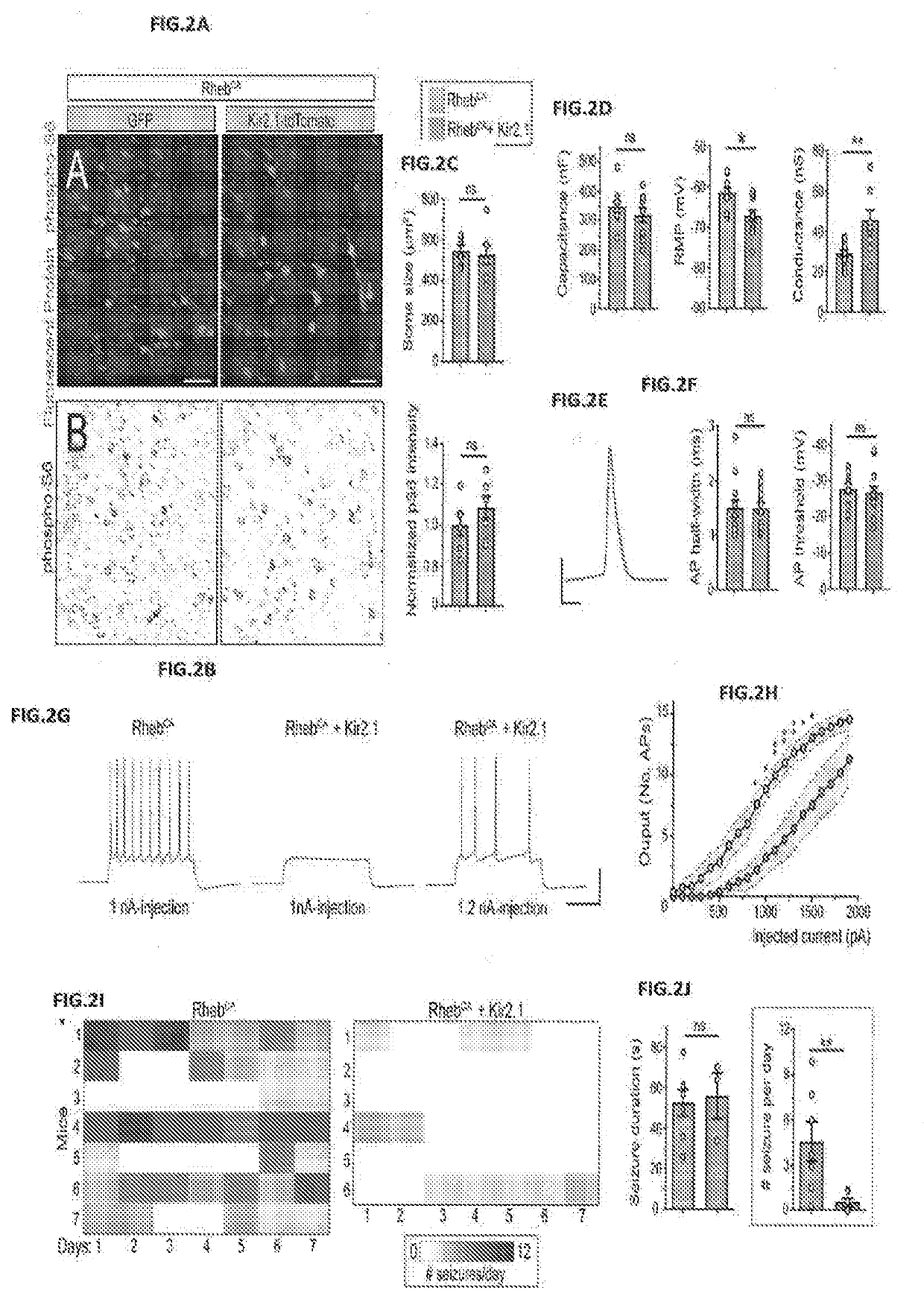Methods of treating and diagnosing epilepsy
a technology of epilepsy and treatment methods, applied in the field of treating and diagnosing epilepsy, can solve the problems of life-long epilepsy in the majority of patients, brain malformations, mtor hyperactivity, etc., and achieve the effect of preventing the development of new therapeutic targets and effective treatment options
- Summary
- Abstract
- Description
- Claims
- Application Information
AI Technical Summary
Benefits of technology
Problems solved by technology
Method used
Image
Examples
experimental examples
[0086]The invention is further described in detail by reference to the following experimental examples. These examples are provided for purposes of illustration only, and are not intended to be limiting unless otherwise specified. Thus, the invention should in no way be construed as being limited to the following examples, but rather, should be construed to encompass any and all variations which become evident as a result of the teaching provided herein.
[0087]Without further description, it is believed that one of ordinary skill in the art can, using the preceding description and the following illustrative examples, make and utilize the compounds of the present invention and practice the claimed methods. The following working examples therefore, specifically point out the preferred embodiments of the present invention, and are not to be construed as limiting in any way the remainder of the disclosure.
[0088]The Materials and Methods used in the following examples are here described.
A...
example 1
FCM Neurons Decreases Seizure Activity
[0100]To investigate the mechanisms of seizure generation in FCM, a mouse model that recapitulates the focal nature of the cortical malformation and the cellular mosaicism of human FCDII and TSC brains was used. To generate this model, in utero electroporation (IUE) to induce mTOR hyperactivity in pyramidal neurons in a limited cortical area (FIG. 1A) was used. IUE at embryonic day (E) 15 specifically target radial glia that generate layer 2 / 3 pyramidal neurons (FIG. 1B). To increase mTOR activity, a constitutively active mutant Rheb (RhebCA), the canonical mTOR activator was expressed (FIG. 1B). A fluorescent protein (GFP or tdTomato) was co-expressed to label neurons. These mice developed a singular FCM in the medial prefrontal cortex (FIG. 1C) that displayed a pathology resembling that of human FCM, including the presence of misplaced and cytomegalic RhebCA-expressing neurons that are interchangeably called FCM neurons (FIG. 1D and FIG. 1E). ...
example 2
ns Abnormally Express HCN Channels Leading to Depolarized RMP and cAMP Sensitivity
[0102]Next were examined the electrical properties of FCM neurons using patch clamp recordings in acute brain slices from P26-P42 mice. As previously reported, it was confirmed that FCM neurons displayed significantly depolarized RMPs and increased conductance compared to control neurons in littermate mice expressing only GFP (FIG. 3A). Consistent with an increased conductance, there was a significant shift in the input (injected current from their RMP)-output (# of action potentials) curve, suggesting that RhebCA neurons are less likely to generate action potentials upon depolarizations (FIGS. 3C and 3D). Using hyperpolarizing current step, one unexpected observation was the present of a robust “sag” response in RhebCA neurons that was either minimal or mostly not present in control neurons (FIG. 3E). Such a sag response suggests the presence of HCN channels. Under control conditions, HCN channels are...
PUM
| Property | Measurement | Unit |
|---|---|---|
| current- | aaaaa | aaaaa |
| current | aaaaa | aaaaa |
| time | aaaaa | aaaaa |
Abstract
Description
Claims
Application Information
 Login to View More
Login to View More - R&D
- Intellectual Property
- Life Sciences
- Materials
- Tech Scout
- Unparalleled Data Quality
- Higher Quality Content
- 60% Fewer Hallucinations
Browse by: Latest US Patents, China's latest patents, Technical Efficacy Thesaurus, Application Domain, Technology Topic, Popular Technical Reports.
© 2025 PatSnap. All rights reserved.Legal|Privacy policy|Modern Slavery Act Transparency Statement|Sitemap|About US| Contact US: help@patsnap.com



